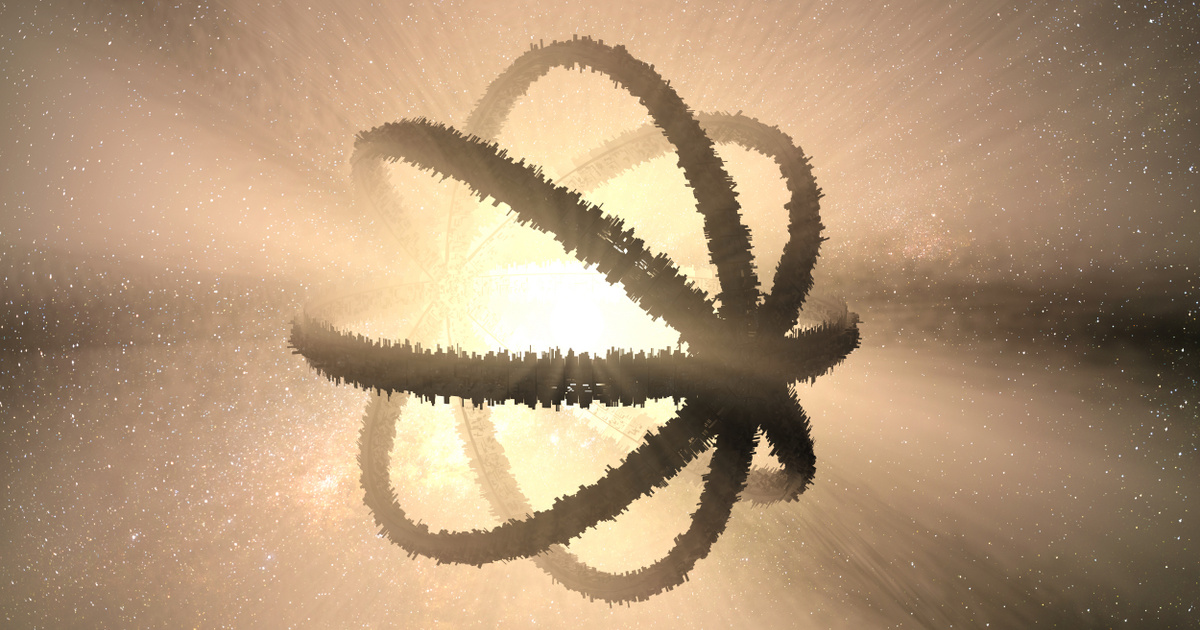It is an age-old philosophical, spiritual and scientific question whether or not humanity is a unique phenomenon in the universe, what it means if it is not, but why it is still so. Identifying alien civilizations is not easy, at the current level of technical development it is not possible – of course, it does not hurt to know what to look for. We look for evidence of advanced technology, radio signals, gravitational waves generated by spacecraft or waste heat visible from afar, i.e. infrared radiation. We assume that a civilization of thousands of billions of years ago built objects distinct from the cosmic environment and recognizable to us. One such possible combination is the Dyson ball.
The concept of the Dyson ball comes from the legendary American physicist and mathematician Freeman Dyson. In 1960, Dyson proposed that an intelligent, technologically advanced civilization would always need more and more energy, so one possible solution would be to build an envelope floating in space around its star, in order to use up all the energy flowing from it.
Not only was the idea brilliant, but apart from some difficulties, it is also technically possible and, moreover, logical, and also means that we can easily detect extraterrestrial civilizations, we only have to look for spheres built around such stars. Since all energy ends up as heat, it is enough to detect not the shell itself, but infrared radiation.
Lots of solar panels
The Hephaestus Project, which recently published its second report, has begun to detect such signs. The research program, in which American, British, Indian and Swedish researchers are participating, takes its name from Greek mythology and Hephaestus, the god of fire and blacksmithing, the protector of metalworkers and all other trades. According to the program's researchers, Dyson spheres under construction are easier to recognize because of their stronger infrared radiation.
The program examined data from the star catalogs of the European Gaia space telescope, the American 2MASS, and NASA's infrared space telescope, WISE. They analyzed the optical properties of nearly five million stars by combining the three catalogs of stellar variability, and tried to filter out spurious properties from exceptionally strong infrared signals, which were distorted by, for example, galactic light. Behind the star or the effect of dust floating in interstellar space.
We have developed a workflow that results in Dyson field filters whose anomalous infrared emission cannot be explained by any other known natural phenomenon.
– said the researchers.
As a result of the screening, 368 potential candidates remained, of which 328 were filtered as a combination of several sources, 29 as unique exceptions and 4 signals distorted by nebulae. Of the first 5 million, 7 stars remained in the end, which, according to researchers, may actually be the result of the work of an alien civilization.
There may be natural causes for the infrared emission coming from these seven stars, but there is no clear explanation for any of them, especially since they are M dwarfs.
– the researchers pointed out.
It is possible to see the glow of local debris fields, but these debris fields around so-called red dwarfs are extremely rare and do not appear in this form in known cases.
We know of no such source for M dwarfs
– pointed out Mathias Suazo, PhD student at Uppsala University.
According to the researchers, we are either seeing young stars with unchanged infrared light, or they are surrounded by a field of very bright new debris, or there may be something more exotic in the background. The identity of the seven stars can be clarified through further visual analysis and spectroscopic examination.
(Cover image: Dyson ball. Photo: cocada / Getty Images/iStockPhoto)














































